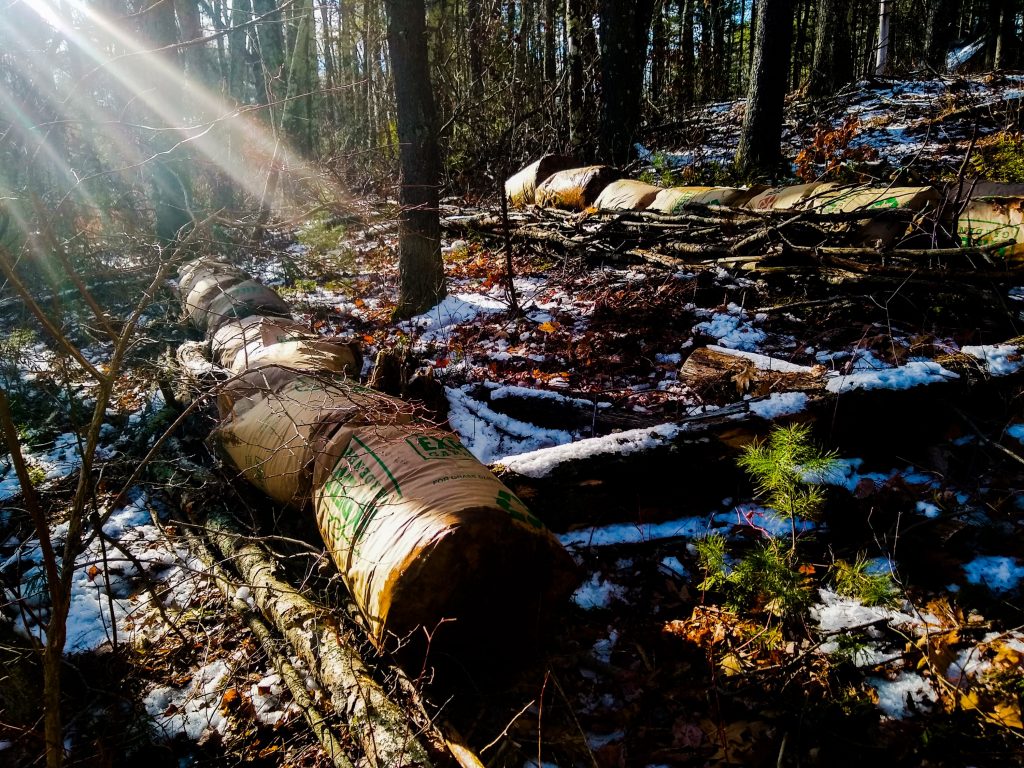This week at the mini farm we’re applying some design principles to more actively start cultivating an area of the forest for food production. We mentioned earlier in the year doing some selective cutting and debris cleanup in order to encourage some patches of berry bushes and small hazelnut trees to grow more in the coming years.
Part of clearing the debris has been to pile up dead wood and other plant matter along the length of a slope to catch water and leaves and anything else that might find itself subject to gravity. In doing so, the flow of water down the hill will be slowed, and because of that more of it will soak into the landscape rather than end up in the brook downhill. The plants close to these biomass berms will require little to no irrigation for most of the year, and by trapping moisture and biological activity we can encourage faster breakdown of useful biological fertility.
Many very serious permaculture designers will calculate where the precise line is to keep berms and swales totally level; we’re not bother with that. At least for now our region has enough moisture that I don’t need to worry about getting every last drop, so slowing down the water coming down the hill is enough. It’s also just a lot easier for me to pile rows of stuff where I want.

We were given a few dozen bags full of leaves from a pesticide free lawn, so we’re piling a number of them across what will be the most intensively area. When we get and/or make more mushroom spawn, we’ll probably put a fistful of that pawn into each bag; probably Stropharia on one berm and Pleurotus in the other. Then in the spring we can transplant more herbs and fruit bushes along the berm, and prune the existing wild ones. This way, the leaves can be broken down faster and we can cultivate fruit, herbs, and mushrooms in one space.
If you have a sloped area, whether it’s forested or not, creating earthen or biomass structures on grade to slow down water and catch debris is a great technique to reduce overall work and increase biological activity.
If you like what I’m doing here and want to make sure I can keep doing it, please consider supporting these projects financially. It sucks, but until capitalism isn’t a thing there are bills to pay.
Support the cause:



